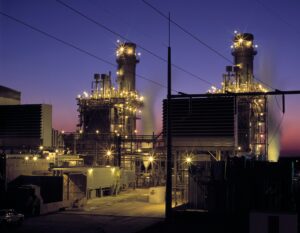Alberta 
Alberta’s restructured energy market misses mark for modernizing the grid
 The Alberta government announced it was changing electricity regulations in order to strengthen the power grid, lower and stabilize utility bills, and encourage investment in the province. However, critics say the electricity market rules recently released encourage more expensive means of power generation and discourage new investment in wind and solar projects—the lowest-cost forms of energy generation. “This means Albertans will be forced to pay more for electricity than they would if all options competed on a level playing field,” says Jason Wang, senior analyst of the Pembina Institute’s Electricity program. According to Wang, the Pembina Institute is also concerned that the finalized Restructured Energy Market (REM) is currently intended to bypass the Alberta Utilities Commission’s (AUC) approvals process. The objectives of the Restructured Energy Market design, outlined in late 2024, are to ensure a reliable, affordable electricity system that facilitates decarbonization by mid-century. A key aspect of the new design involves a fundamental change to the structure of the price of power. Under the new design there will be different prices for different locations, based on how much it costs to make and deliver the power, including any traffic (congestion) in the power lines.
The Alberta government announced it was changing electricity regulations in order to strengthen the power grid, lower and stabilize utility bills, and encourage investment in the province. However, critics say the electricity market rules recently released encourage more expensive means of power generation and discourage new investment in wind and solar projects—the lowest-cost forms of energy generation. “This means Albertans will be forced to pay more for electricity than they would if all options competed on a level playing field,” says Jason Wang, senior analyst of the Pembina Institute’s Electricity program. According to Wang, the Pembina Institute is also concerned that the finalized Restructured Energy Market (REM) is currently intended to bypass the Alberta Utilities Commission’s (AUC) approvals process. The objectives of the Restructured Energy Market design, outlined in late 2024, are to ensure a reliable, affordable electricity system that facilitates decarbonization by mid-century. A key aspect of the new design involves a fundamental change to the structure of the price of power. Under the new design there will be different prices for different locations, based on how much it costs to make and deliver the power, including any traffic (congestion) in the power lines.
Source: Environmental Journal
Electricity Prices for Alberta
The Alberta power pool price averaged 7.305 cents per kWh in September 2025. This price is 2.27 cents higher than last month’s average of 5.035 cents. The pool price has averaged 4.601 cents per kWh over the last 12 months.
As of October 1, 2025, the forward market was predicting electricity prices for the calendar years of 2025, 2026, 2027, 2028, 2029, 2030, and 2031. These prices are 5.375, 5.069, 6.100, 7.800, 8.080, 8.380, and 8.380 cents per kWh respectively.
Gas Prices for Alberta
Direct Energy’s gas rate for September 2025 was $0.722 per GJ in Alberta. The October 2025 rate has been set at $1.429 per GJ. Alberta gas prices have averaged $1.760 per GJ over the last 12 months.
As of October 1, 2025, the forward market was predicting gas prices for the calendar years of 2025, 2026, 2027, 2028, and 2029. These prices are 1.95, 2.84, 3.08, 2.99, and 2.94 cents per GJ, respectively.
British Columbia 
Eby Promotes B.C. Clean Energy and Critical Minerals in New York
Speaking at Climate Week NYC, Premier David Eby emphasized that B.C.’s abundant resources, combined with its clean hydroelectric grid, provide a foundation for sustainable growth and global partnerships. Eby pointed to the province’s hydroelectric power system as a unique advantage that makes B.C. a low-emission hub for extracting and processing critical minerals. These resources—including those used in batteries, renewable infrastructure, and electric vehicles—are essential for the international shift toward net-zero economies. He stressed the importance of aligning B.C.’s economic strengths with international climate targets, ensuring both environmental protection and long-term prosperity for local communities. By showcasing the province’s role in the transition, the government hopes to establish new trade and investment relationships that will benefit local economies across the province.
Source: West Coast Current
Ontario 
Making Home Heating More Affordable for Ontarians
 Through the Oil to Heat Pump Affordability (OHPA) program, the Governments of Canada and Ontario are working together to help income-qualified households make the switch from oil heating to more affordable, energy-efficient electric heat pumps. Already, tens of thousands of Canadians have saved an annual average of over $1,300 and 2.78 tonnes of greenhouse gas — together that’s the equivalent of taking 17,000 cars off the road. Julie Dabrusin, Minister of Environment and Climate Change, announced a new partnership with the Independent Electricity System Operator (IESO) to co-deliver the OHPA program in Ontario, supported by an investment of nearly $37.5 million from the Government of Canada. This collaboration will make it easier for households to benefit from up to $25,000 in funding ($15,000 in federal funding and $10,000 in provincial funding), plus an upfront payment of $250, to help cover the cost of switching to a heat pump. Heat pumps cut bills and emissions, providing efficient year-round heating and cooling. They are two to three times more efficient than electric furnaces, saving homeowners money while reducing grid demand.
Through the Oil to Heat Pump Affordability (OHPA) program, the Governments of Canada and Ontario are working together to help income-qualified households make the switch from oil heating to more affordable, energy-efficient electric heat pumps. Already, tens of thousands of Canadians have saved an annual average of over $1,300 and 2.78 tonnes of greenhouse gas — together that’s the equivalent of taking 17,000 cars off the road. Julie Dabrusin, Minister of Environment and Climate Change, announced a new partnership with the Independent Electricity System Operator (IESO) to co-deliver the OHPA program in Ontario, supported by an investment of nearly $37.5 million from the Government of Canada. This collaboration will make it easier for households to benefit from up to $25,000 in funding ($15,000 in federal funding and $10,000 in provincial funding), plus an upfront payment of $250, to help cover the cost of switching to a heat pump. Heat pumps cut bills and emissions, providing efficient year-round heating and cooling. They are two to three times more efficient than electric furnaces, saving homeowners money while reducing grid demand.
Source: Government of Canada
Saskatchewan 
Collaborative Buildgreen Saskatchewan conference highlighting decarbonizing innovation
Buildgreen Saskatchewan, a major green conference planned for those in the construction sector, is aiming to foster more inter-disciplinary collaboration in an effort to bring forward much-needed decarbonizing provincial solutions. Solutions such as Regina’s $313.6 million aquatic centre, where crews will drill more than two kilometres underground tapping into naturally occurring hot water for heating the facility. The two-day conference will bring together contractors, government representatives, architects and engineers and those involved in the heating, ventilation, air-conditioning and refrigeration industries to find decarbonizing building innovations. Buildgreen Saskatchewan chairman Ayo Daniel Abiola, said the challenge is not only making buildings more energy efficient and decreasing carbon output but doing it in a way that it lessens the impact on the environment. The conference begins with a tour of the University of Regina buildings as it is recognized as a leader in environmental, climate change and clean energy research. The Kirk Tower is also part of the tour and became Western Canada’s first highrise with in-floor HVAC. This system cut energy use by 30 per cent and improved campus-wide electrical efficiency. Numerous panels will be held over the two-day conference (Nov. 12 and 13) with presenters drawn from across Canada.
Source: Journal of Commerce
Manitoba 
Unlocking Manitoba’s Green Advantage: A Pathway to Sustainable Growth
The Manitoba Green Advantage Project is a bold, forward-looking initiative that positions our province at the forefront of Canada’s transition to a low-carbon, sustainable economy. Led by the Manitoba Chambers of Commerce, this project is designed to identify, promote, and strengthen Manitoba’s competitive edge in clean energy, sustainable industries, and climate-friendly innovation. Our province is powered by a predominantly clean electricity grid, backed by advanced manufacturing know-how and a growing network of innovative businesses. The Manitoba Green Advantage Project seeks to harness these strengths, create new economic opportunities, and ensure Manitoba businesses are leaders—not followers—in the green economy. By aligning with federal priorities, strengthening our competitive edge, and fostering innovation, we can ensure that Manitoba stands as a model for how environmental stewardship and economic prosperity go hand in hand.
Source: Manitoba Chambers of Commerce
New Brunswick 
Opposition grows to a proposed natural gas plant in rural Tantramar
 A proposed natural gas plant in Tantramar, New Brunswick has received backlash from residents over its potential impacts on the environment and community. In July 2025, NB Power contracted US-based company ProEnergy to construct a natural gas plant on a 20-hectare site between Centre Village and Midgic within greater Tantramar. The plant would begin operating in 2028 and be able to generate up to 500 megawatts of electricity. Mikko McGregor-Corson, an Honours biology student and organizer with Divest Mt. A, believes the plant could have harmful effects on migratory species in the Chignecto Isthmus, an ecological corridor that contains Tantramar and the surrounding area. While ProEnergy’s representatives initially promoted the involvement of Indigenous stakeholders, citing the North Shore Mi’kmaq Tribal Council as a “minority equity holder”, no commitments have been made. Some community members also questioned NB Power’s decision to extend reliance on fossil fuels, rather than develop renewable sources of energy. NB Power has argued that the plant would lower provincial emissions by 250,000 tonnes per year by acting as a backup generator for wind and solar energy. McGregor-Corson expressed concern, pointing out that current assessments do not consider ecosystem-level or human health risks.
A proposed natural gas plant in Tantramar, New Brunswick has received backlash from residents over its potential impacts on the environment and community. In July 2025, NB Power contracted US-based company ProEnergy to construct a natural gas plant on a 20-hectare site between Centre Village and Midgic within greater Tantramar. The plant would begin operating in 2028 and be able to generate up to 500 megawatts of electricity. Mikko McGregor-Corson, an Honours biology student and organizer with Divest Mt. A, believes the plant could have harmful effects on migratory species in the Chignecto Isthmus, an ecological corridor that contains Tantramar and the surrounding area. While ProEnergy’s representatives initially promoted the involvement of Indigenous stakeholders, citing the North Shore Mi’kmaq Tribal Council as a “minority equity holder”, no commitments have been made. Some community members also questioned NB Power’s decision to extend reliance on fossil fuels, rather than develop renewable sources of energy. NB Power has argued that the plant would lower provincial emissions by 250,000 tonnes per year by acting as a backup generator for wind and solar energy. McGregor-Corson expressed concern, pointing out that current assessments do not consider ecosystem-level or human health risks.
Source: The Argosy
Prince Edward Island 
Enwave Breaks Ground on New Energy-from-Waste District Energy Heating Facility in Prince Edward Island, A Localized Solution for Waste Diversion in the Province
Enwave Energy Corporation celebrated the groundbreaking of a new waste processing facility in Prince Edward Island at PEI Energy Systems in Charlottetown. Anticipated to be fully operational in 2028, the new, state-of-the-art facility will replace the existing end-of-life system and provide energy to its customers through the interconnected district energy network. Enwave has worked closely with the Province of Prince Edward Island to identify and develop this sustainable alternative to landfill, while securing a reliable energy supply for the Island. As critical infrastructure for both heating and waste management, it is anticipated that the facility will be capable of processing nearly 90% of the province’s current total black cart residential waste, significantly diverting waste from landfill. The new facility is expected to divert up to 49,000 tonnes of municipal solid waste from landfills annually for production of heating and the associated anticipated diverted landfill methane emissions, avoided furnace fuel oil use, and alternative heat sources for the district heating customers are expected to amount to Greenhouse Gas (GHG) savings of up to 908,000 tonnes of CO2e by 2052, equivalent to taking approximately 278,000 gas powered cars off the road.
Source: Global Newswire
Québec 
Québec Green Hydrogen and Bioenergy Strategy
The Québec Green Hydrogen and Bioenergy Strategy has the purpose of creating a coherent framework and a favourable environment to accelerate the production, distribution and use of green hydrogen and bioenergy. These energy sectors can provide solutions to replace fossil fuels and reduce GHG emissions, even in the most polluting sectors of activity, such as transportation and industry. In the pursuit of its energy transition and on the strength of its natural resources, Québec intends to increase the role of green hydrogen and bioenergy in its energy portfolio in view of decarbonizing and strengthening its economy. It is estimated that green hydrogen and bioenergy will play a major role in the success of the global energy transition. In 2030, green hydrogen and bioenergy will have the potential to reduce consumption of petroleum products by nearly one billion litres per year in Québec. This could reduce our GHG emissions by 4 megatonnes of CO2 per year, which would be equivalent to removing 1.2 million gasoline vehicles from the roads. By the 2050 horizon, according to the International Energy Agency, global hydrogen demand could be multiplied by five and bioenergy production could meet 20% of global energy needs, if global carbon neutrality is targeted.
Source: Government of Quebec
Newfoundland and Labrador 
Newfoundland & Labrador Green Transition Fund Supports Six New Projects
 Through the Green Transition Fund, Steve Crocker, Minister of Industry, Energy and Technology, announced over $519,000 to support six green projects throughout the Newfoundland & Labrador. Through the expression of interest process, six new projects have been approved for funding. The Green Transition Fund aims to propel the development of environmentally sustainable business practices and clean technologies in the province and position Newfoundland and Labrador as a leader in the global green transition. This fund supports the greening of commercial operations, research and development, manufacturing and extractive resource development, and other areas that help transition to a greener economy.
Through the Green Transition Fund, Steve Crocker, Minister of Industry, Energy and Technology, announced over $519,000 to support six green projects throughout the Newfoundland & Labrador. Through the expression of interest process, six new projects have been approved for funding. The Green Transition Fund aims to propel the development of environmentally sustainable business practices and clean technologies in the province and position Newfoundland and Labrador as a leader in the global green transition. This fund supports the greening of commercial operations, research and development, manufacturing and extractive resource development, and other areas that help transition to a greener economy.
Source: Electrical Industry News Week
Nova Scotia 
Province Paves Way for Clean Energy Projects
The Province continues to pave the way for clean energy projects and the jobs and investments they bring for Nova Scotians. The Powering the Offshore Act, introduced September 26, updates legislation related to offshore wind, tidal energy and the Nova Scotia-New Brunswick intertie. The act changes three pieces of energy legislation: Changes to the Electricity Act will allow power purchase agreements to keep all options open for using the tremendous resource of Nova Scotia’s offshore wind, including domestic use. Because supporting too many projects could pose a risk to ratepayers, the amendment will cap energy from these projects at their current volume of 1,140 megawatts so that no new project can be added unless another does not proceed. Changes to the Marine Renewable-energy Act will create the ability to merge licences for tidal energy projects. And changes to the Public Utilities Act will make it clear that Nova Scotia Power is exempt from municipal taxation and building code requirements for its capital assets – including when the utility co-owns an asset, such as the Nova Scotia-New Brunswick intertie.
Nunavut 
New Solar Panels Help Power Inuit Stewardship in Arctic Bay
The Qikiqtani Inuit Association (QIA) is pleased to announce that solar panels will soon be installed on the new Nauttiqsuqtiit Conservation Centre in Arctic Bay, bringing clean energy, new opportunities and long-term benefits to the community. Thanks to $594,900 in funding from Natural Resources Canada (NRCan), the solar installation in Arctic Bay is moving forward. The project is being carried out with the support of Nunavut Nukkiksautiit Corporation (NNC), Nunavut’s first 100% Inuit-owned renewable energy developer, and Solvest, a trusted northern solar company. The 48 kW DC system will include 96 solar panels and is expected to produce nearly 38,000 kilowatt-hours of electricity each year. This clean energy will help reduce the community’s reliance on diesel fuel, cut greenhouse gas emissions, and lower energy costs over time.
Source: Qikiqtani Inuit Association
Northwest Territories 
N.W.T. gov’t tells power companies to plan to increase use of renewable energy
 The N.W.T. government is directing the territory’s power companies to launch a long-term plan that incorporates more renewable resources while keeping rates affordable. The plan is required to take into account climate targets in 2030 and 2050. This includes upping the cap on renewable power generation from 20 per cent to 30 per cent. The territory acknowledged this could have a significant impact on power costs, so the plan needs to ensure the supply is reliable and affordable. The territorial government’s directive includes numerous suggested changes to how power is managed in the territory. One of those includes how rates from independent renewable power are determined. In communities that rely on diesel generators, residents adding more things like solar panels to their homes, can actually make the cost of diesel higher for those who don’t have solar. This is because it causes the generator to run less efficiently. Another part of the plan is for power companies to encourage people to switch from heating fuels to hydroelectricity and provide more financial support to incentivize those to do so.
The N.W.T. government is directing the territory’s power companies to launch a long-term plan that incorporates more renewable resources while keeping rates affordable. The plan is required to take into account climate targets in 2030 and 2050. This includes upping the cap on renewable power generation from 20 per cent to 30 per cent. The territory acknowledged this could have a significant impact on power costs, so the plan needs to ensure the supply is reliable and affordable. The territorial government’s directive includes numerous suggested changes to how power is managed in the territory. One of those includes how rates from independent renewable power are determined. In communities that rely on diesel generators, residents adding more things like solar panels to their homes, can actually make the cost of diesel higher for those who don’t have solar. This is because it causes the generator to run less efficiently. Another part of the plan is for power companies to encourage people to switch from heating fuels to hydroelectricity and provide more financial support to incentivize those to do so.
Source: Eye on the Arctic
Yukon 
Indigenous-Owned Wind Power Strengthens Energy Security in the North
Parliamentary Secretary Brendan Hanley, on behalf of Tim Hodgson, Minister of Energy and Natural Resources, and Gregor Robertson, Minister of Housing and Infrastructure, announced $13.5 million in new federal funding for the Kluane N’tsi Wind Energy Project, located between the communities of Burwash Landing and Destruction Bay, in Yukon. These new funds bring the total federal funding for this project to $16.5 million. The Kluane N’tsi Nation’s 900-kW wind turbine has been integrated into the existing diesel grid, along with battery storage that allows the community to turn off diesel generators completely when wind power is available. This will cut more than 300,000 litres of diesel use every year — about 50 percent of the plant’s prior diesel consumption. It is the first community-owned, grid-scale wind project in Canada that allows for “diesel-off” conditions, setting a new national precedent. By enhancing domestically produced energy in Yukon, this project strengthens energy security in the North and demonstrates how Indigenous leadership is driving clean energy solutions that can cut emissions and lower costs for Canadians.
Source: Government of Canada